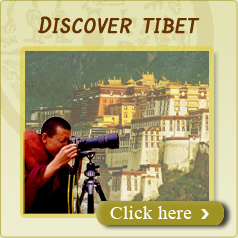Barkhor Street

Overview
One of the best places to view modern day Lhasa and its diversity of culture is in the bustling Barkhor, a section of the old city. Here, the Barhor Market has all manner of goods from turquoise jewelry to meditation beads, colorful traditional Tibetan clothes and yak wool sweaters. Here you can watch groups of monks draped in their maroon and saffron robes mingling with Tibetans from remote areas wearing long boots, sporting daggers and large turquoise necklaces.
Know more
Barkhor Area
The first stop for most newcomes to Lhasa is the Jokhang in the heart of the old Tibetan part of town. But before you even venture into the Jokhang it is worth taking a stroll around the Barkhor, Lhasa's most interesting Kora(pilgrimage circuit), a quatrangle of streets that surrounds the Jokhang and some of the old buildings adjoining it. It is an area unrivalled in Tibet for its fascinating combination of deep religiosity and push-and -shove marker economics.
As you follow the crowds into the Barkhor circuit, there is a curious sensation of having slipped backwards through time into a medieval carnival. This is one part of Lhasa that has resisted any invasion of the modern world. Pilgrims from Kham, Amdo and further areas step blithely around a prostrating monk and stop briefly to finger a jewel-encrusted dagger at a street stall; children dressed like bit players in a stage production of Oliver Twist tug at the legs of a foreign visitor and beg for Dalai Lama pictures; a line of monks sit cross-legged on the paving stones before their alms bowls muttering mantras
The whole circuit is lined with stalls selling everything a Tibetan or visiting tourist could possibly need. Some of the stalls sport a wide variety of souvenir items of dubious quality (be prepared to bargain very hard), others specialise: some in cowboy-style hats or chubas(long-sleeved sheepskin cloakds), others in carpets, some in prayer scarves and prayer flags, others in turquoise or clothes-great browsing even if you are not in the mood for a purchase.
Barkhor Square
For your first visit to the Barkhor area, enter from Barkhor Square (at the eastern end of Yuthok Lam), a larger plaza that was cleared in 1985 and renovated in 2000.
Situated in Barkhor Square, is the noisy and colorful heart of Lhasa. It was built in the 7th century when King Songtsen Gampo wanted to build a temple to house two famous statures brought by his brides from Tang dynasty and Nepal. Close to the entrance to the Jokhang is a constant stream of Tibetans following the Barkhor circumambulation route in a clock-wise direction. Look for the two pot-bellied, stone sangkang (incense burners) in front of the Jokhang. There are four altogether, comprising the four extremities of Barkhor circuit; the other two are positioned at the rear of Jokhang. Behind the first two sangkang are two enclosures. The northern stele is inscribed with the terms of the Sino-Tibetan treaty of 822. The southern one harbours the stump of an ancient willow tree, known as the hair of the Jowo, allegedly planted by Songtsen Gampo's Han wife, Princess Wencheng, and a stele erected in 1793 commemorating smallpox victims.
Must see
Potala Palace the architectural wonder is Lhasa's cardinal landmark. It can be seen from all directions for miles around. With its world-wide reputation, the Potala Palace stands on the Red Hill overlooking the Tibetan city of Lhasa...more
Located in the center of the ancient city of Lhasa, the Jokhang Monastery was built in the seventh century by Songtsan Gambo, the Tang Princess Wen Cheng and Nepalese Princess Bhrikuti ...more
Located in the northwest of Lhasa, to east of the Potala and north of the Jokhang, Ramoche Monastery, is considered the most important temple in Lhasa after the Jokhang Temple ...more
The National Aquatics Centre, also known as "The Water Cube", is one of the most dramatic and exciting venues to host sporting events for the Beijing Olympics in 2008 ...more










